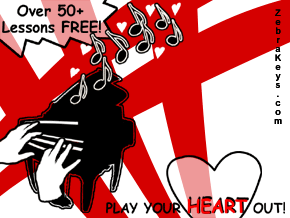Recommended
Categories
Basic Music Notation
Lesson 5 - Note Durations |
|---|
I. Index1. Introduction II. Content1. IntroductionIn this lesson, you are going to learn about how rhythm is represented in music notation.2. Keeping Time in MusicWhen playing music, you have to know how to keep time. Music is divided into separate chunks of time called "measures". Measures are separated from each other by a vertical line called a "bar line".3. Time SignaturesA time signature tells you how a particular piece of music is played. A time measure consists of two numbers written as a fraction (i.e. 4/4). The top number tells you how many counts (beats) are in each measure, and the bottom number tells you what kind of a note (e.g. a whole note, a half note, etc.) receives one count. For example, when the time signature is 4/4, the "4" on the top tells you that there are four beats in each measure, and the "4" on the bottom tells you that a "quarter note" receives one count (or beat). When a "time signature" shows "3/4", the "3" on the top tells you that there are three beats in each measure, and the "4" on the bottom tells you that a "quarter note" receives one count. Our lessons will be using the time signatures of "4/4, 3/4, and 2/4".4. Four Counts per MeasureMusic written with a time signature of 4/4 has four counts per measure. Let's go ahead and count one through four in each measure. Notice that there is a plus sign between the numbers. You can substitute the plus sign (+) with "and". By doing this, you can count "one and two and three and four and". This will make it easier for you to count an "eighth note" further in this lesson and lessons to come.5. Three Counts per MeasureSometimes, music is written with three counts per measure instead of four. Music written with a time signature of 3/4 is called 3/4 time and receives three counts per measure. Let's go ahead and count "one and two and three and" in each measure.6. Two Counts per MeasureAt other times, there are two counts per measure instead of four. Music written with a time signature of 2/4 is called 2/4 time and receives two counts per measure. Let's go ahead and count "one and two and" in each measure.7. Note DurationsHow a note looks tells us how many counts or beats it receives. As we have learned how to count within a measure, let us now take a few moments to study different notes in the chart below:8. Counting With Whole NotesIn 4/4 time, a "whole note" receives 4 counts (beats). In the example below, there is only 1 whole note in each measure. Play and hold each note for four counts (i.e. "one and two and three and four and"). Let's now listen to the animation below and count along. Count "one and two and three and four and / one and two and three and four and".9. Counting With Half NotesIn 4/4 time, a "half note" receives 2 counts (beats). In the example below, there are 2 half notes in each measure. Play and hold each note for two counts (i.e. "one and, two and"). Let's now listen to the animation below and count along. Count "one and two and three and four and / one and two and three and four and".10. Counting With Quarter NotesIn 4/4 time, a "quarter note" receives 1 count (beat). In the example below, there are 4 quarter notes in each measure. Play and hold each note for one count (i.e. "one and"). Let's now listen to the animation below and count along. Count "one and two and three and four and / one and two and three and four and".11. Counting With Dotted Half NotesIn 4/4 time, a "dotted half note" receives 3 counts (beats). In the example below, there is 1 dotted half note and one quarter note in each measure. Play and hold each dotted half note for three counts (i.e. "one and two and three and") and each quarter note for one count (i.e. "one and"). Let's now listen to the animation below and count along. Count "one and two and three and four and / one and two and three and four and".12. Counting With Eighth NotesIn 4/4 time, an "eighth note" receives 1/2 of a count (beat). In the example below, there are 8 eighth notes in each measure. Play and hold each note for one-half of a count (i.e. "one"). Let's now listen to the animation below and count along. Count "one and two and three and four and / one and two and three and four and".13. ConclusionCongratulations! You have just learned how to keep time in music by counting.Now try out what you have just learned on our virtual piano keyboard below... 
Custom Search
|
Recommended Stuff
Basic Music Notation
|
Lesson 4 Grand Staff 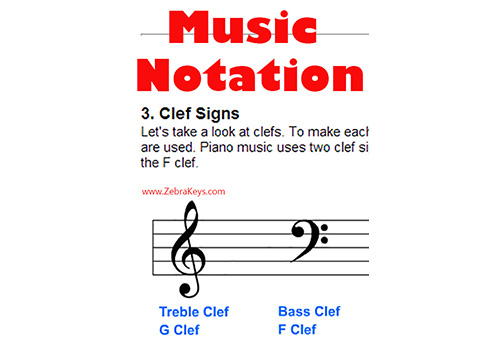 |
Lesson 5 Note Durations  |
Lesson 4 - Music Notation: Grand Staff
Download music notation Flash CardsLesson 5 - Note Durations
How to Keep Time in Music - Learn "Time Signatures" and "Note Durations"
Learn the "whole steps" and "half step" in music
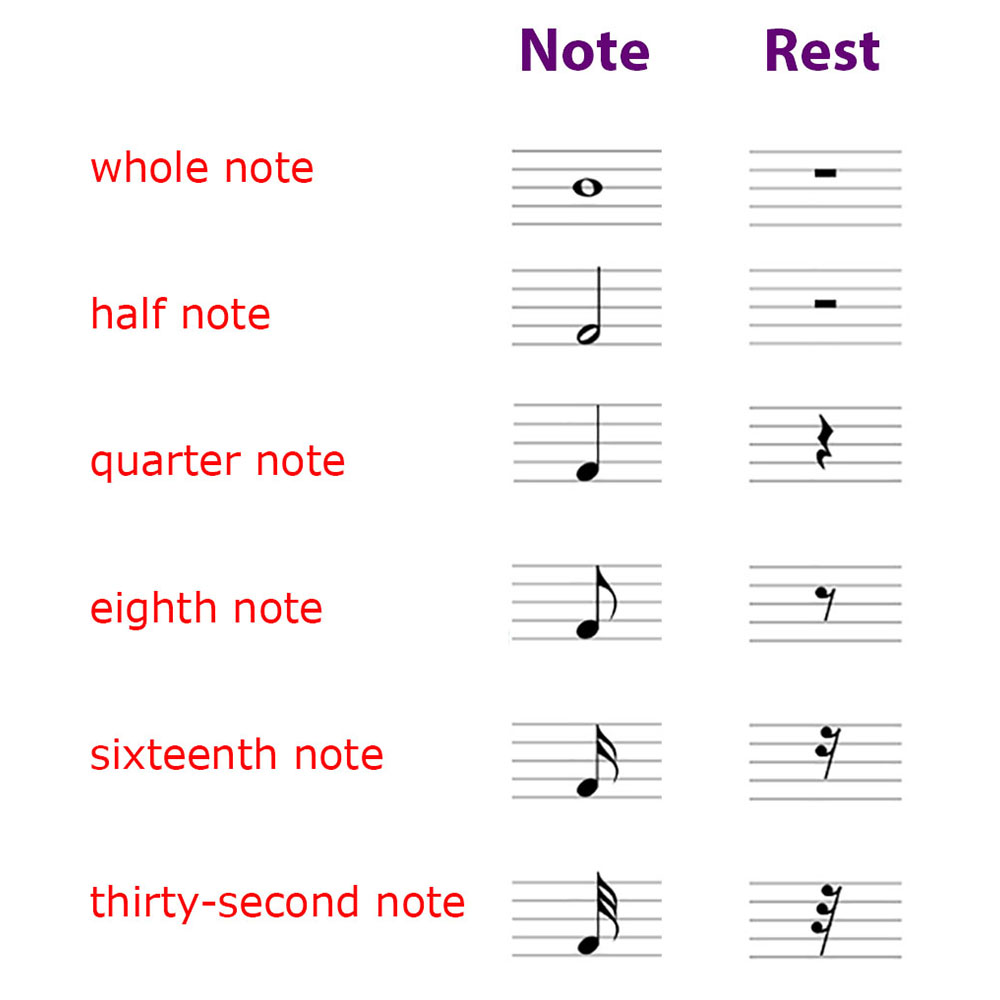

|
Piano Notes Learn the names of the white keys  |
Learn to play easy song, comes with Music Notes 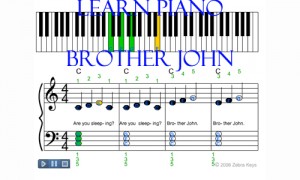 |
| TRANSLATE this content |
| Beginner Piano | | | Intermediate Piano | | | Advanced Piano |
|
List of 50 Free Lessons
Piano Basics  Lesson 1 - Patterns of Piano Keyboard Lesson 2 - Names of White Keys Lesson 3 - Names of Black Keys Lesson 4 - Grand Staff Lesson 5 - Note Durations |
Use our free Virtual Piano Keyboard in conjunction with these free lessons:
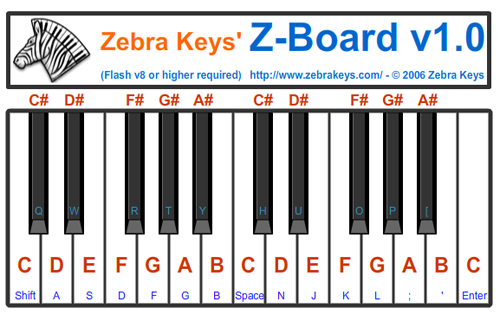 |
|
Beginner Piano Lesson 6 - Brother John Lesson 7 - London Bridge Is Falling Down Lesson 8 - Twinkle Twinkle Little Star |
 |
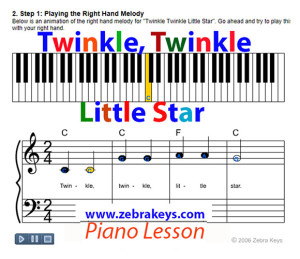 |
| Lesson 9 - Major Chord |
|
FIND any CHORDS using Free Virtual Piano Chord Chart 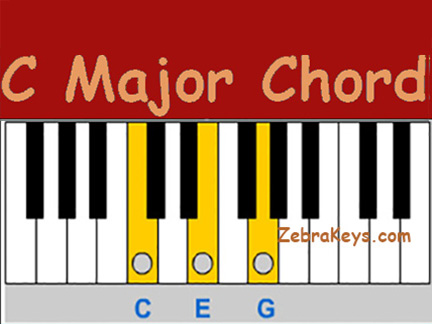 |
|
Lesson 10 - Three Primary Chords Lesson 11 - 12 Bar Blues Chord Progression |
| Lesson 12 - 12 Keys of Music |
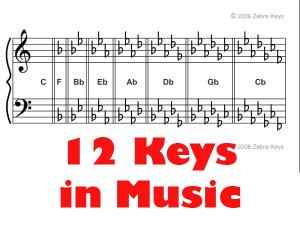 |
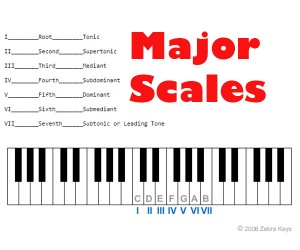 |
|
Lesson 13 - Major Scale
Lesson 14 - Musical Intervals Lesson 15 - Chords of the Major Scale Lesson 16 - The Circle of Fifths |
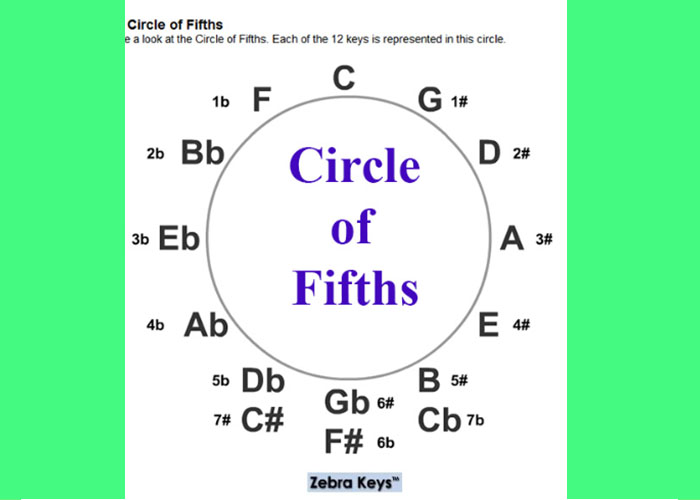 |
|
Lesson 17 - Chord Inversions Lesson 18 - Double Chord Pattern Lesson 19 - Broken Chord Pattern Lesson 20 - Arpeggio Chord Pattern Lesson 21 - Sounds of the Orient (Pentatonic Scale) Lesson 22 - Mysterious Sounds (Whole Tone Scale) Lesson 23 - Arpeggios |
|
Intermediate Piano Lesson 24 - America (My Country Tis of Thee) Lesson 25 - Silent Night Lesson 26 - God Rest Ye Merry Gentlemen |
|
Lesson 27 - Minor Chord Lesson 28 - Three Secondary Chords Lesson 29 - Dominant 7th Chord Lesson 30 - Major 7th Chord Lesson 31 - Minor 7th Chord Lesson 32 - Natural Minor Scale Lesson 33 - Chords of the Natural Minor Scale |
|
Lesson 34 - Melody as Octaves Lesson 35 - Root Chord Pattern Lesson 36 - Harmony Notes Lesson 37 - Major Chord Inversions Lesson 38 - Chord Inversion Straddles |
|
Advanced Piano Lesson 39 - The First Noel (Flash demo version) Lesson 40 - Auld Lang Syne Lesson 41 - Hark! The Herald Angels Sing |
|
Lesson 42 - Diminished Chord Lesson 43 - Augmented Chord Lesson 44 - 6th Chords Lesson 45 - Sus2 Chords Lesson 46 - Sus4 Chords Lesson 47 - Major 9th Chords Lesson 48 - Major 11th Chords Lesson 49 - Major 13th Chords Lesson 51 - Blues Scale |





